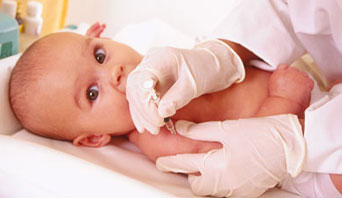
This week, issue about diphtheria has been spread in Malaysia because there’s a case child die because of the disease.
What is diphtheria? It is a serious, highly contagious disease caused by a toxin made by bacteria. Diphtheria causes a thick covering in the back of the throat. It can lead to breathing problems, paralysis, heart failure, and even death. It is spread through the respiratory droplets from sneezes and coughs. Diphtheria can also be spread by contaminated objects or foods. Even if an infected person doesn’t have any symptoms, they can infect others for up to four weeks.
Crowded environments, poor hygiene, and lack of immunization are all risk factors for diphtheria.
Cause and Transmission
Diphtheria is spread (transmitted) from person to person, usually through respiratory droplets, like from coughing or sneezing. Rarely, people can get sick from touching open sores (skin lesions) or clothes that touched open sores of someone sick with diphtheria. A person also can get diphtheria by coming in contact with an object, like a toy, that has the bacteria that cause diphtheria on it.
Symptoms
When the bacteria that cause diphtheria get into and attach to the lining of the respiratory system, which includes parts of the body that help you breathe, they produce a poison (toxin) that can cause:
- Weakness
- Sore throat
- Fever
- Swollen glands in the neck
The poison destroys healthy tissues in the respiratory system. Within two to three days, the dead tissue forms a thick, gray coating that can build up in the throat or nose. This thick gray coating is called a “pseudomembrane.” It can cover tissues in the nose, tonsils, voice box, and throat, making it very hard to breathe and swallow.
The poison may also get into the blood stream and cause damage to the heart, kidneys, and nerves.
Complications
Complications from diphtheria may include:
- Blocking of the airway
- Damage to the heart muscle (myocarditis)
- Nerve damage (polyneuropathy)
- Loss of the ability to move (paralysis)
- Lung infection (respiratory failure or pneumonia)
For some people, diphtheria can lead to death. Even with treatment, about 1 out of 10 diphtheria patients die. Without treatment, as many as 1 out of 2 patients can die from the disease.
Diagnosing diphtheria
A diagnosis of diphtheria can be confirmed by taking a sample of cells from the throat, nose or wound on the skin.
This will be examined to see whether the bacteria that cause diphtheria are present.
Treating diphtheria
Diphtheria must be treated quickly to prevent serious complications developing. If diphtheria is suspected, treatment will begin before any test results are confirmed.
Treatment for diphtheria comprises antibiotics and antitoxin medicine. Anyone suspected of having the condition will be put in isolation when they’re admitted to hospital. Those who develop heart and nervous system complications will need specialist treatment, and may need to be admitted to the intensive care ward.
Source :- ImmunizeforGood
Source:-CDC
Source : NHS

Leave a Reply